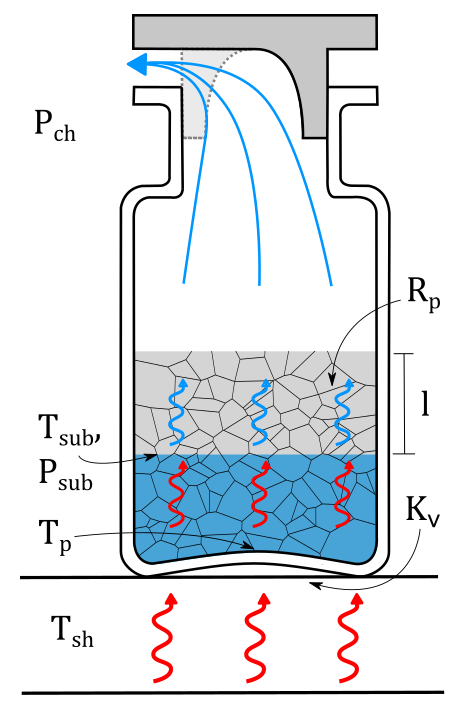(563a) Sublimation Front Shape during Pharmaceutical Lyophilization: Investigation By Simulation
AIChE Annual Meeting
2023
2023 AIChE Annual Meeting
Pharmaceutical Discovery, Development and Manufacturing Forum
Control Strategies for Biopharmaceutical and Pharmaceutical Process Design and Development
Monday, November 6, 2023 - 8:00am to 8:21am
Accurate models for heat and mass transfer during the primary drying step of lyophilization are crucial for optimizing the lyophilization process, particularly with respect to drying time and product stability. The most common methods of modeling the heat and mass transfer treat the sublimation front as being planar with 1-dimensional pseudo-steady heat and mass transfer. This approach is appealing for its simplicity, and achieves a reasonable agreement with experiment in many literature examples.
However, a 1D approach is no longer applicable once heating from the vial walls becomes significant, for example when one uses RF/microwave sources or when the vials experience radiative heating from chamber walls. In addition, this method cannot adequately explain the temperature rise which can be observed when the sublimation front passes a thermocouple during primary drying. To get an improved understanding of these phenomena, we develop an axisymmetric, level-set method to study the non-planar sublimation front when there is significant heat and mass transfer in the vertical as well as radial directions. This simulation can be combined with work on porous structure variation to gain a more fundamental understanding of the porous structure and flow behavior, which the current state of the art treats only very empirically. We will compare the simulation results with experimental data of freeze-drying with RF/microwave heating, and comment on its applicability for different process conditions; in addition, this work can inform improved reduced-order models for control in cases where the 1D approach currently fails.
